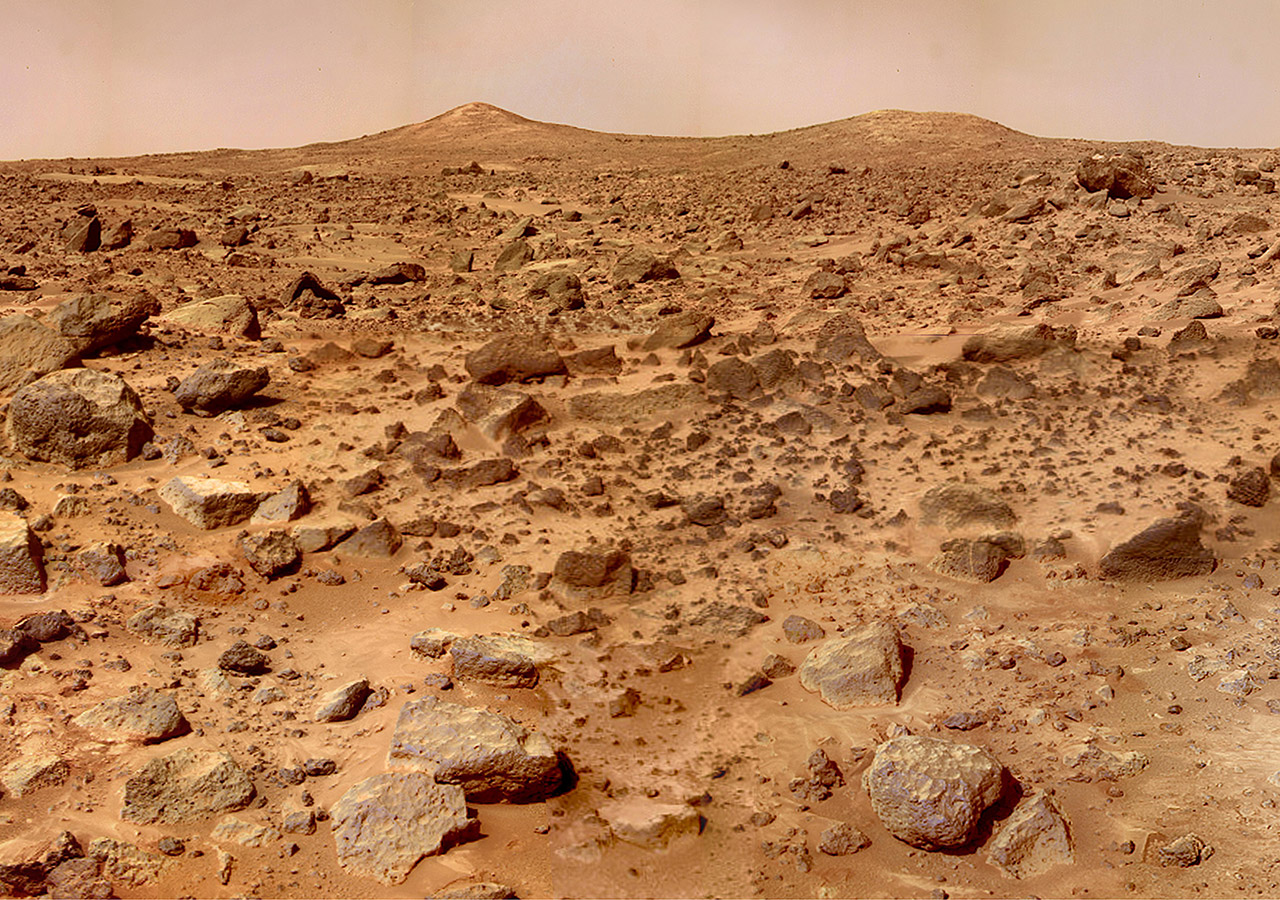
NASA’s Mars Pathfinder mission arrived July 4, 1997 on the Red Planet. Its small rover, named Sojourner after abolitionist Sojourner Truth, spent 83 days of an initially planned 7-day mission, exploring the Martian terrain. A multitude of images were captured, while also taking chemical, atmospheric and other measurements. The final data transmission was received from Pathfinder at 6:23 am EST on September 27, 1997.
The image you see above showcases Twin Peaks, which are medium-sized hills located to the southwest of the Mars Pathfinder landing site. Their peaks are around 100 feet tall – North Twin is 2800 feet from the lander and South Twin is 3300 feet. We also see boulder-laden ridges and flood debris meters away from the lander to the distance of the South Twin Peak.
- POWERFUL TELESCOPE FOR ASTRONOMY BEGINNERS: The AstroMaster 130EQ delivers sharp optics, a stable equatorial mount, and smooth manual controls, making it the top choice for beginners ready to explore the night sky.
- HIGH-QUALITY 130MM OPTICS: Enjoy views through the 130mm (5”) Newtonian reflector, which features high-quality aluminum and SiO₂ coatings and enough light-gathering ability to view all the best celestial objects.
- SMOOTH, ACCURATE POINTING: Effortlessly aim and center your target using the two slow-motion control knobs for right ascension and declination whether you’re observing planets or deep-sky objects.
The composite color frames that make up this ‘right-eye’ image consist of seven frames, taken with different color filters that were enlarged by 500 percent and then co-added using Adobe Photoshop to produce, in effect, a super-resolution panchromatic frame that is sharper than an individual frame would be. This panchromatic frame was then colorized with the red, green, and blue filtered images from the same sequence. The color balance was adjusted to approximate the true color of Mars,” said NASA.





